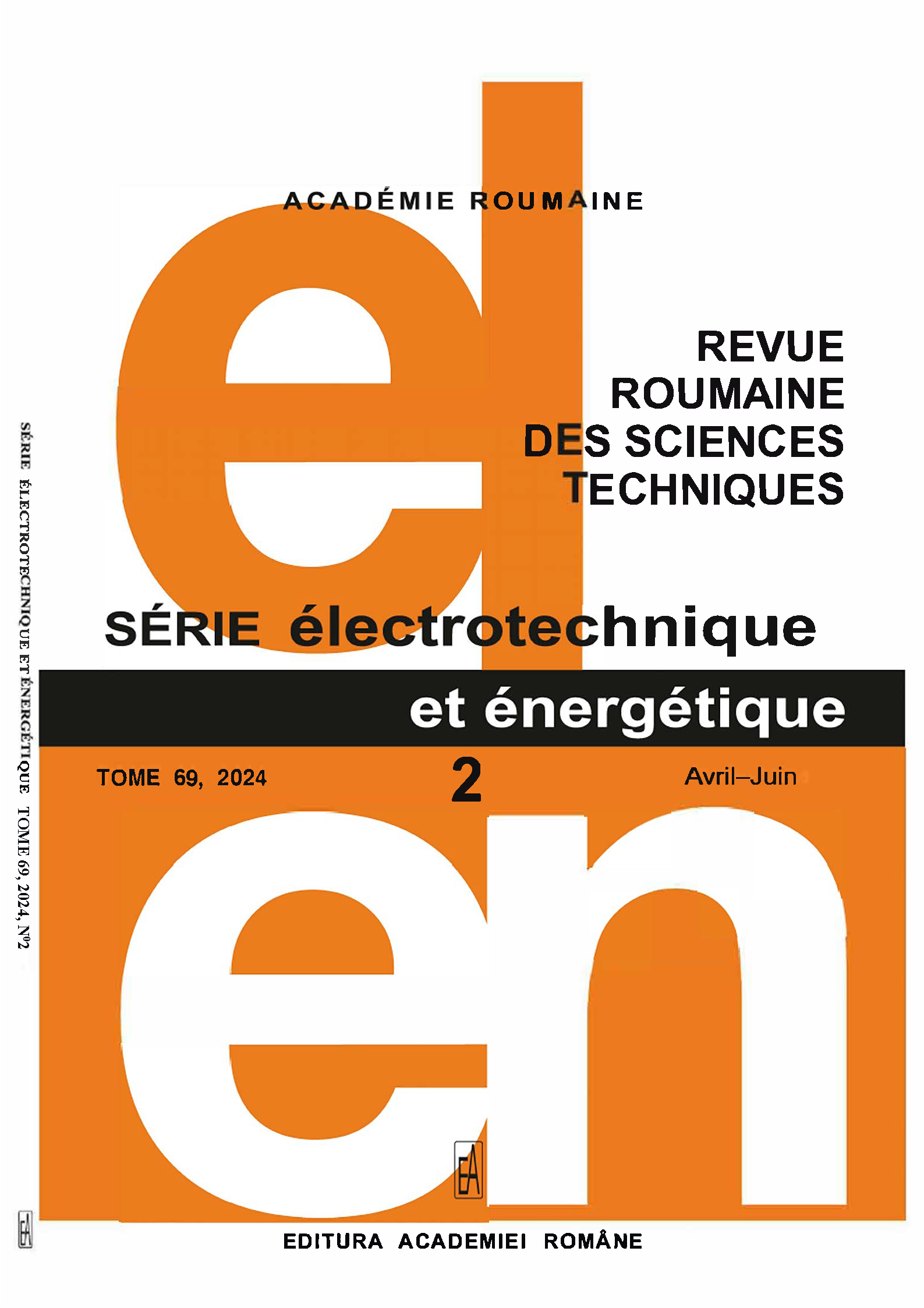MISE EN ŒUVRE EFFICACE EN TEMPS RÉEL BASÉE SUR DSP DU RÉGULATEUR ANFIS POUR LE CORRECTEUR DE FACTEUR DE PUISSANCE MONOPHASÉ
DOI :
https://doi.org/10.59277/RRST-EE.2024.2.4Mots-clés :
Convertisseur de correction du facteur de puissance actif (A-PFC), Système d'inférence neuronale floue adaptatif (AN-FIS), Contrôleur de courant prédictif , Carte dSPACE 1104Résumé
En tant que technologie largement utilisée, les circuits de correction active du facteur de puissance (A-PFC) sont confrontés à de nombreux défis de contrôle, tels que la non-linéarité et les incertitudes. Avec de plus en plus d'appareils électriques connectés au réseau électrique public, l'A-PFC a pour mission d'améliorer la qualité de l'énergie (PQ) pour répondre aux exigences des normes internationales, ce qui entraîne de grands défis pour maintenir la consommation totale. distorsion harmonique (THD) tant qu'un facteur de puissance se situe dans les plages souhaitées. À cette fin, cet article se concentre sur la simulation et la mise en œuvre en temps réel d’un système d’inférence neuronale floue adaptatif (ANFIS) combiné et d’un contrôleur de courant prédictif pour un redresseur PFC monophasé. La méthode de contrôle proposée présente une structure simple et peu coûteuse pour une meilleure réponse et robustesse. Les performances de l'approche de contrôle proposée ont été évaluées en temps réel sur la base du processeur de signal numérique dSPACE 1104 pour différentes conditions de référence et de charge. Les résultats obtenus à partir de tests de simulation et expérimentaux valident la supériorité de l'approche proposée en mettant en évidence un facteur de puissance unitaire, un THD inférieur, une réponse dynamique rapide et une robustesse face aux variations rapides de charge et de tension de sortie.
Références
(1) B. Singh, B.N. Singh, A. Chandra, K. Al-Haddad, A. Pandey, D.P. Kothari, A review of single-phase improved power quality ac-dc converters, IEEE Trans. Ind. Electron., 50, pp. 962–981 (2003).
(2) A. Karaarslan, A. Iskender, DSP based power factor correction converter to reduce total harmonic distortion of input current for improvement of power quality, Electr. Eng., 93, pp. 247–257 (2011).
(3) R.C. Dugan, M.F. McGranaghan, S. Santoso, H. Wayne Beaty, Electrical power system quality, 2nd ed.; McGraw-Hill, 2003.
(4) A. Bouafassa, L. Rahmani, S. Mekhilef, Design and real-time implementation of single-phase boost power factor correction converter, ISA Trans., 55, 267–274 (2015).
(5) K. Kayisli, S. Tuncer, M. Poyraz, A novel power factor correction system based on sliding mode fuzzy control, Electric power components and systems, 45, 430–441 (2017).
(6) A. Kessal, L. Rahmani, GA-optimized parameters of sliding-mode controller based on both output voltage and input current with an application in the PFC of ac/dc converters. IEEE Trans. Power Electron., 29, 3159–3165 (2014).
(7) J.D. Faucher, S. Caux, P. Maussion, Fuzzy controller tuning of a boost rectifier unity power factor correction by experimental designs, Electr. Eng, 91, 167–176 (2009).
(8) A. Bouafassa, L. Rahmani, A. Kessal, B. Babes, Unity power factor converter based on a fuzzy controller and predictive input current. ISA Trans., 53, 1817–1821 (2014).
(9) C. Komathi, M.G. Umamaheswari, Design of gray wolf optimizer algorithm-based fractional order pi controller for power factor correction in SMPS applications. IEEE Trans. Power Electron., 35, pp. 2100–2118 (2020).
(10) A. Benyamina, S. Moulahoum, I. Colak, R. Bayindir, Design and real-time implementation of adaptive neural-fuzzy inference system controller based unity single phase power factor converter. Electr. Power Syst. Research, 152, pp. 357–366 (2017).
(11) N. Priyadarshi, S. Padmanaban, J.B. Holm-Nielsen, F. Blaabjerg, M.S. Bhaskar, An experimental estimation of hybrid ANFIS–PSO-based MPPT for PV grid integration under fluctuating sun irradiance. IEEE syst. Journal, 14, pp. 1218–1229 (2020).
(12) D. Mlakić, H.R. Baghaee, S. Nikolovski, A novel ANFIS-based islanding detection for inverter-interfaced microgrids. IEEE Trans. Smart Grid, 99, pp. 1–13 (2018).
(13) L. Senthil Murugan, P. Maruthupandi, Sensorless Speed control of 6/4-pole switched reluctance motor with ANFIS and fuzzy-PID-based hybrid observer, Electr. Eng., 102, pp. 831–844 (2020).
(14) A. Alice Hepzibah, K. Premkumar, ANFIS current–voltage controlled MPPT algorithm for solar powered brushless dc motor-based water pump, Electr. Eng., 102, pp. 421–435 (2020).
(15) A. Bouafassa, L. Rahmani, B. Babes, R. Bayindir, Experimental design of a finite state model predictive control for improving power factor of boost rectifier, Proceedings of the IEEE 15th International Conference on Environment and Electrical Engineering (EEEIC), pp. 1556–1561 (2015).
(16) J.S. Jang, ANFIS adaptive-network-based fuzzy inference system, IEEE Trans. Syst. Man Cybern., 23, pp. 665–685(1993).
(17) L.N. Ramya, A. Sivaprakasam, Application of model predictive control for reduced torque ripple in orthopedic drilling using permanent magnet synchronous motor drive, Electr. Eng., 02, 3, pp. 1469–1482 (2020).
Téléchargements
Publiée
Numéro
Rubrique
Licence
(c) Copyright REVUE ROUMAINE DES SCIENCES TECHNIQUES — SÉRIE ÉLECTROTECHNIQUE ET ÉNERGÉTIQUE 2024

Ce travail est disponible sous licence Creative Commons Attribution - Pas d'Utilisation Commerciale - Pas de Modification 4.0 International.


